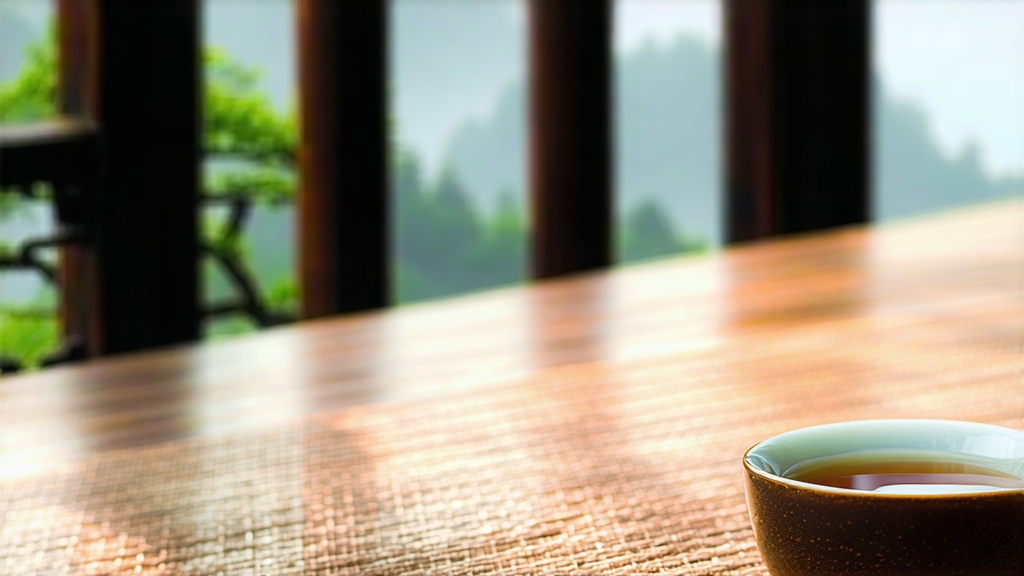
If oolong tea is the jazz of the Camellia sinensis world—improvisational, layered, forever balancing between green freshness and black depth—then Phoenix Dancong from Guangdong Province is the saxophone solo that makes the whole room fall silent. Few teas can match its aromatic range: within one leaf you may find peach, orchid, almond, ginger flower, even the scent of winter honey. Yet behind the perfume lies a 900-year lineage rooted in granite cliffs, monsoon clouds, and the patient craft of generations of Dancong masters.
A Brief History Written in Smoke and Mist
Legend places the birth of Dancong during the Southern Song Dynasty (1127-1279), when the imperial retinue fled northward and settled in the Fenghuang (Phoenix) Mountains of eastern Guangdong. Court farmers noticed wild tea trees growing at 600-1,200 m among cinnamon and pomelo forests; the leaves, once roasted, released an uncanny fragrance reminiscent of the flowers that carpeted the slopes. By the Ming era these “single-bush” (dan-cong) trees were being individually selected, propagated by seed, and named after the aroma they most evoked—Almond, Ginger Flower, Honey Orchid, Yellow Gardenia. During the Qing, Phoenix Dancong became one of the “Three Tribute Teas” sent to the Emperor, traveling north in bamboo-lined crates along the Meizhou river and then the Grand Canal. In the twentieth century civil war and market neglect pushed Dancong to the brink of extinction; only after 1982, when a delegation of Wuyi tea scientists arrived to share modern roasting techniques, did the mountain villages revive their ancient groves. Today roughly 30,000 ancient trees—some over 600 years old—still cling to the cloud-veiled granite, and every spring their buds are fought over by collectors from Guangzhou, Taipei, Tokyo, and, increasingly, Berlin and San Francisco.
Terroir: Where Rock Meets Monsoon
The Phoenix range is a spine of weathered granite shooting up from the South China Sea only 60 km inland. Daytime mountain heat pulls maritime fog up ravines; night-time temperatures plummet, locking aromatics into the leaves. The soil is a mineral-rich mix of coarse sand and rotting leaf litter, so porous that a 30-minute downpour vanishes almost instantly, forcing roots to dive three metres or more. Because the slopes face every point of the compass, each micro-valley harvests sunlight differently, giving rise to the famous “ten fragrances, one mountain” phenomenon. The most celebrated villages—Wudong, Shiqiao, Daping, and Zhugang—sit above the 800 m cloud belt where ultraviolet intensity is 30 % higher than in the valley, concentrating catechins and volatile terpenes.
From 2,000 Cultivars to Ten Legendary Fragrances
Strictly speaking, “Dancong” simply means “single bush,” and local growers once maintained over 2,000 seed-propagated individuals, each with subtle genetic drift. To bring order to chaos, the 1983 Guangdong Tea Research Institute classified the mountain’s aromatics into ten “fragrance types.” The roster reads like a perfumer’s notebook:
- Huangzhi Xiang (Yellow Gardenia)
- Xingren Xiang (Almond)
- Milan Xiang (Aglaia)
- Yulan Xiang (Magnolia)
- Zhilan Xiang (Orchid)
- Youhua Xiang (Pomelo Flower)
- Jianghua Xiang (Ginger Flower)
- Meihua Xiang (Plum Blossom)
- Guihua Xiang (Osmanthus)
- Ruxiang (Cream or Honey)
Of these, Honey Orchid (Mi Lan Xiang) is the gateway style most newcomers meet: approachable, peach-honey top notes over a mineral spine. Connoisseurs, however, chase the elusive “Song Zhong”—trees traced to the Song-era mother stock—or the cliff-hugging “Eight Immortals” bushes that yield fewer than two kilograms per spring and sell for thousands of dollars a kilogram.
Craft: The Rhythm of Wither, Shake, and Charcoal
Phoenix Dancong is made entirely by hand in a 24-hour marathon that starts at 3 a.m. when dew is